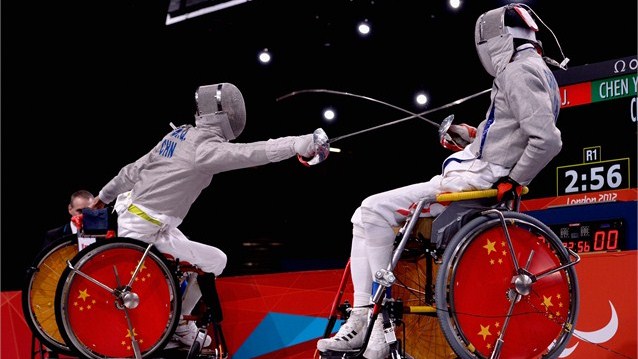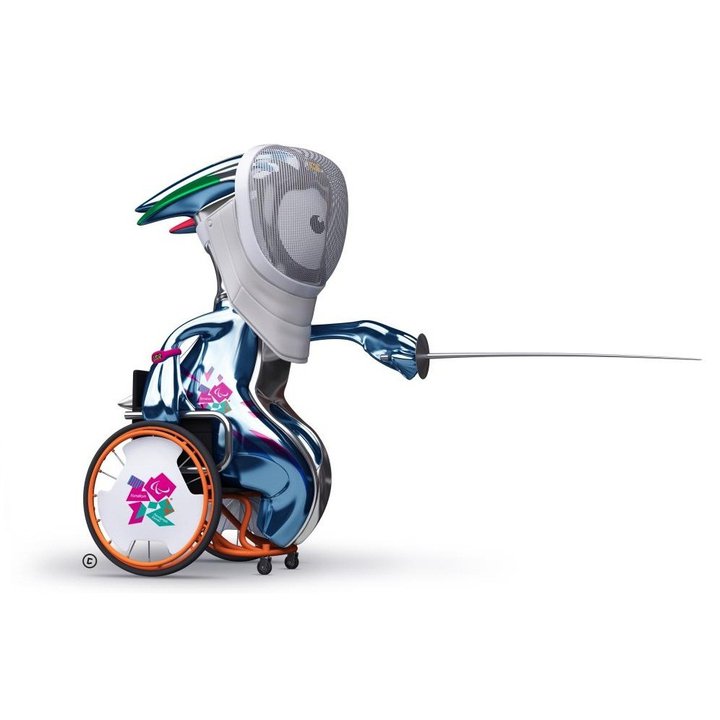Check this video out for an overview of wheelchair fencing – one of the sports of the 2012 Paralympic Games.
If you’ve never tried wheelchair fencing, you should – just to experience how difficult it is. Able bodied fencers are able to use their footwork as part of the game, and use the ability to get out of distance to take a break (even small ones) where there’s no chance of your blade being engaged. Not so with wheelchair fencing. It is a taxing sport as you are using a lot more upper-body movement and strength to carry out the moves.
Here’s the official explanation:

Athletes compete in wheelchairs that are fastened to the floor. This gives the fencers real freedom of movement in their upper bodies, while keeping them fixed in their chairs. The length of the playing area is determined by the athlete with the shorter arm reach, who decides if the distance between competitors will be set at the length of their opponent’s reach or their own.
Three types of fencing weapons are used in Paralympic Fencing. In bouts using the Foil and the slightly heavier Epée, hits are scored by hitting an opponent with the tip of the weapon. However, in Sabre, hits may also be scored with the edge of the weapon. The target area for the Foil is limited to the opponent’s torso, while competitors in the Sabre and Epée events may be struck anywhere above the waist.






